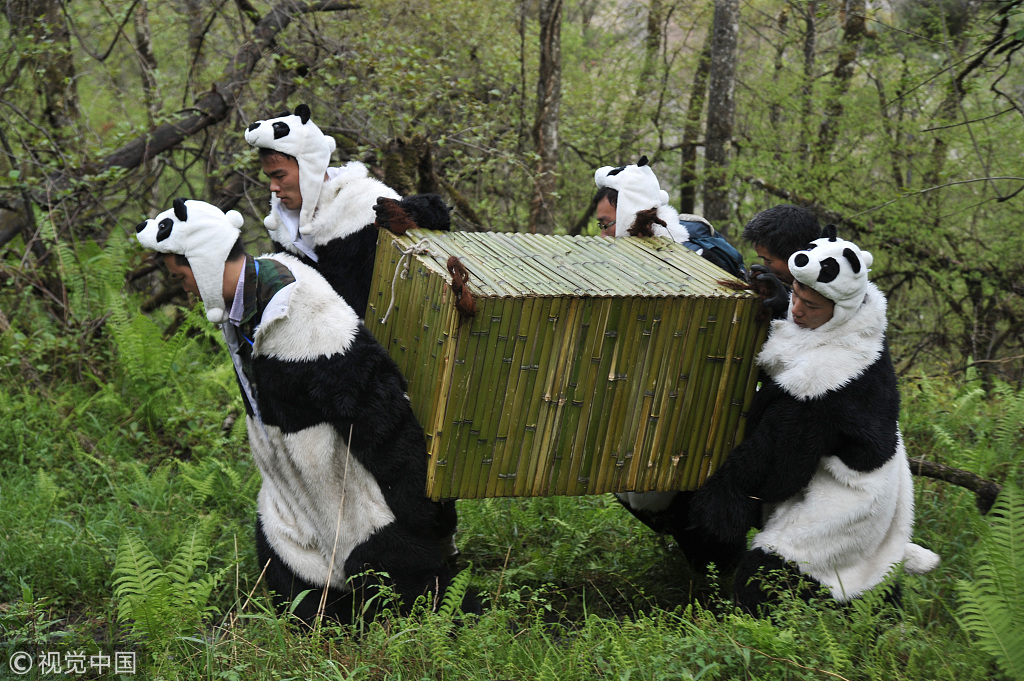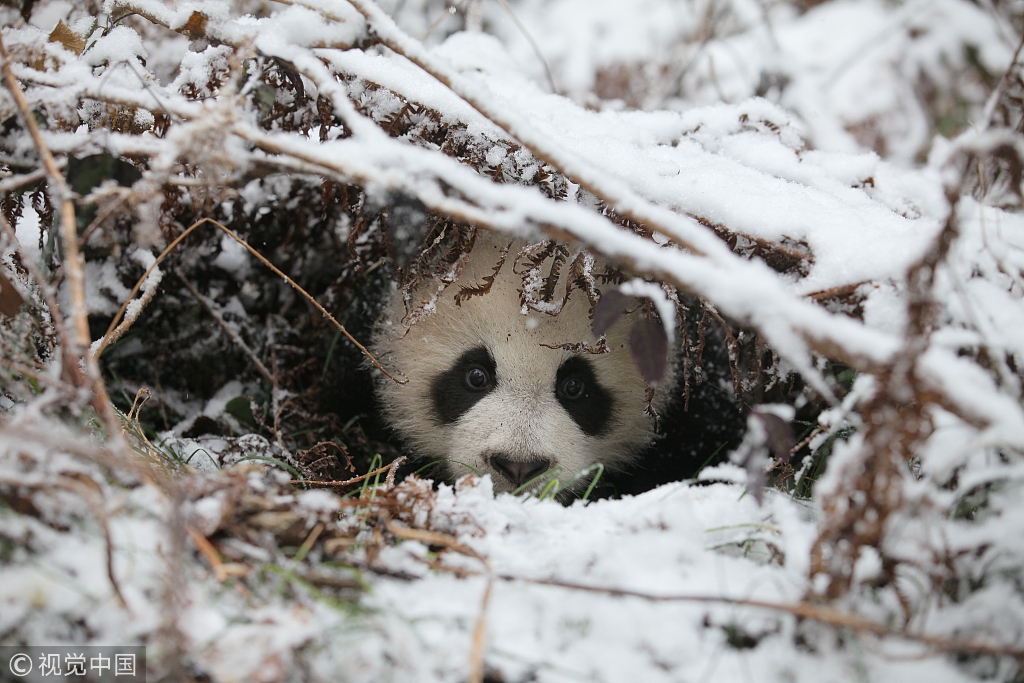
This is People's Daily Tonight, your news source from China.

On May 3, 2012, researchers in panda suits carried a bamboo crate to help move a panda to its new wild training ground at the Hetaoping base which is used for wilderness traning for captive pandas. (Photos: VCG)
The giant panda, dubbed China’s national treasure, improved its official status from “endangered” to “vulnerable” when the International Union for Conservation of Nature updated its Red List in 2016, thanks to Chinese conservationists’ decades of efforts to boost the population.
Since 2003, China has been building training bases to captive-breed pandas before their release into their native habitats, marking the start of China’s first wild release program.
China now runs at least three training centers and two release bases, all of which are located in the mountainous Sichuan Province in Southwest China. The area is known as the "cradle of the panda" to the public, and a biodiversity hotspot to conservationists.

A file photo shows Tao Tao in an attempt to hide himself in a snowy day in 2010 at the Liziping Wild Training Base.
In October 2012, a two-year-old male panda Tao Tao cautiously walked out of his crate and ran into the forest in Liziping Nature Reserve.
Tao Tao resurfaced on scientists’ radar at the end of last year when he was caught in a trap set up by biologists to recapture released animals for health checks.
A thorough examination showed that the 165 kilogram bear was in good condition, and proved the new survival training model was workable.

A file photo shows Tao Tao sitting closely to his mother Cao Cao at the Liziping Wild Training Base in 2010.
Tao Tao was the first panda cub born in the wild training base and trained with the new method. Tao Tao mastered almost all survival skills crucial for his independence from observing and modeling behaviors of his mother Cao Cao, which included foraging and avoiding predators. Human activities in the environment were minimized as much as possible during the training.
The little interaction with humans was a gift for Tao Tao, which helped cultivate his high alertness to any unfamiliar noises, said Huang Yan, vice-chief engineer of China Conservation and Research Center for Giant Panda, and also the main advocate of the mother-led model. “Tao Tao is more like wild pandas. Sometimes he would be scared away due to the sudden sound we made approaching him,” said Huang. “It’s rare to see in captive pandas, but a life-saving reaction while living in the wild.”
Despite the enormous efforts to expand the size of panda’s remaining native habitat and the rising population, the findings of field surveys are still concerning. Gu Xiaodong, a wildlife resources protection official of Sichuan’s forestry authorities, warned that fragmented habitat, habitat loss due to human activity, and scant diversity in the gene pool pose serious threats to the creatures.
"We have spent over 50 years to pull pandas from the brink of being endangered, and probably we will spend another 50 years or even more to help them really return to nature, which is a lifelong mission of Chinese panda workers,” said Zhang Zhihe, director of the Chengdu Panda Base.
(Produced by He Jieqiong; story written by Chen Lidan, People's Daily app)


